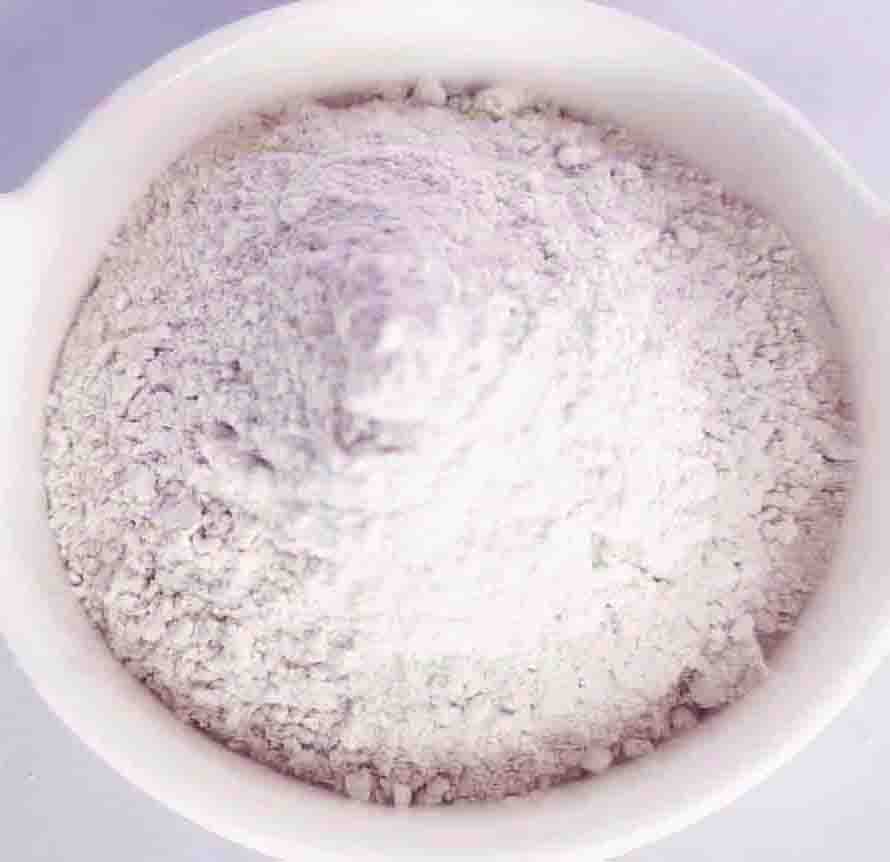Nedir Bentonit Bulamacı?
Hem su hem de bentonit kilinden oluşur, Bentonit bulamacı, benzersiz özellikleri nedeniyle günümüzde sondaj gibi kuyu içi operasyonlarda kullanılan yaygın karışımlar arasında yer almaktadır.. Ana bileşeni olarak montmorillonit içeren, Bu oldukça emici mineral, nem emildikten sonra büyük ölçüde şişer ve daha sonra sıvı/seyreltici ile birleşerek "bentonit bulamacı" olarak adlandırılan yoğun bir çözelti oluşturur..
Hareketi veya çökelme oluşumunu engelleyen yüksek viskozite profili sayesinde, bileşik geniş kullanım alanları buldu. Genellikle inşaat alanı boyunca açılan temel kazıkları veya sondaj delikleri için yapısal takviye sağlamak için kullanılır.. Eklenen tahkimat, delik duvarı dengesizliğine ve saha kazısı sırasında meydana gelebilecek olası çökmeye karşı korumaya yardımcı olur.
Bentonit Kil Bulamacının Uygulaması ve Kullanım Alanları
Bentonit kil bulamacının kullanımı, sondaj sıvısının birincil formu olarak sondaj operasyonlarının önemli bir parçası olarak hizmet verdiği petrol ve gaz endüstrisinde yaygın olarak kalmaktadır.. Matkap ucu için soğutma özelliklerinin yanı sıra sağlam yağlama sağlayarak. Sahadaki yoğun faaliyetler sırasında uygun bakımın sağlanmasına yardımcı olur. Kuyu deliği kesimlerini kontrol altında tutmanın yanı sıra, sondaj kuyusu duvarlarına etkili stabilite faydaları da sağlar – Bu alanda çalışan yüksek vasıflı profesyoneller için onu cazip bir seçim haline getiren süspansiyon özellikleriyle eşleşen optimum viskozite sayesinde.
Tünel açma ve kazı projeleri sırasında, bentonit kil bulamacı çok önemli bir amaca hizmet ediyor. Çok yönlü malzeme, çökme riskini azaltırken daha fazla stabilite sağlamak için toprağa dikkatli bir şekilde enjekte edilebilir.. Dahası, Tünel duvarlarına destek verme yeteneği, yapısal bütünlüğün projenin tüm aşamalarında sabit kalmasını sağlar. Benzer bir şekilde, dökümhane endüstrisinde bentonit kil bulamacı, metalleri mükemmel bir şekilde dökerken esnekliği ve genel kalıp mukavemetini arttırmak için kalıplama kumları ile bağlayıcı madde olarak kullanılan entegre bir bileşen olarak işlev görür.. Bunun sağladığı ilave kolaylık, kalıpların başarıyla çıkarılmasını da sağlar’ Döküm sırasında yabancı maddeler ve gazlar.
Bentonit Bulamacının Uygun Bertarafı Nedir??
Atılan bentonit örneklerinin doğası ve durumunun uygun şekilde değerlendirilmesi göz ardı edilemez. Kirlenmemiş olanlar iyi huylu bir kategoriye girebilirken, hidrolik yağlar veya dizel gibi maddelerle kirlenmiş olanlar tehlikeli atıkların oluşması açısından risk taşıyabilir, dolayısıyla bunların çevre üzerindeki zararlı ayrışma etkilerini ele alan uygun bertaraf mekanizmalarına yönelik daha dikkatli yaklaşımlar gerektirir..
Kirlenmemiş olanlar iyi huylu sayılabilir, hidrolik yağlar veya dizel içerenler ise tehlikeli atıkların oluşmasına neden olabilir.. Bu durumda, çevredeki alanlar üzerindeki zararlı etkilerini hesaba katan, bunların imhası için daha dikkatli stratejilerin benimsenmesi zorunludur..
Bentonit Bulamacıyla Kazık Temelinin Stabilitesini Artırma?
Geoteknik mühendisliğinde önemli bir yöntem, kazıklı temellerin stabilitesini arttırmak için bentonit bulamacının kullanılmasıdır.. Bu, karıştırma için kullanılan suya yavaş yavaş bentonit tozu ilave edilerek gerçekleştirilebilir.. Bu adım, tüm parçacıkların tamamen nemlendirildiğinden emin olmak ve bunların topaklanıp yalnızca kısmen nemlendirilmiş topaklar oluşturmasını önlemek için gereklidir..
Bentonit tozunu veya organokil tozunu yavaş yavaş bulamaç karışımına ekleyerek, Yeterli hidrasyon ve dağılım sağlar, bentonit parçacıklarının sabit ve düzgün bir dağılımıyla sonuçlanır. Bu prosedürü dikkatle takip ederek, bentonit bulamacı en iyi şekilde çalışacaktır, Kazıklı temelin stabilitesinin ve yapının desteğinin iyileştirilmesi.
Mükemmel Bentonit Bulamaç Karışımı Nasıl Elde Edilir?
Birçok inşaat ve jeoteknik uygulama için, İdeal bentonit bulamaç karışımını elde etmek çok önemlidir. Optimum performansı garanti etmek için, temel bileşenlerin belirli oranları kullanılarak bir çimento-bentonit bulamacı yapılır. Aşağıdaki temel bileşenler mükemmel karışımı oluşturmak için kütlece eşit miktarlarda birleştirilir: 1 kısmi su, 0.6-0.8 parça çimento, 0.4-0.2 bentonit parçaları, Ve 0.005-0.01 parçalar sodyum karbonat.
Suyu çimento ve bentonit karışımına belirli bir oranda tutmak en iyisidir. 1:1 oran. Akışkanlık ve stabiliteyi dengeleyerek, bu, bulamacın uygun tutarlılığını ve işlenebilirliğini korur. Su, hidrasyonu kolaylaştırır ve çimento ve bentonit parçacıklarının verimli bir şekilde karışıp bağlanması için bir araç görevi görür.. Bentonit bulamacın viskozitesine ve stabilitesine yardımcı olur, çimento güç ve dayanıklılık katarken. Sodyum karbonatın eklenmesi pH düzenlemesine yardımcı olur ve bulamacın aşırı asitlenmesine karşı koruma sağlar.
Bentonit Bulamaç Duvarı Nedir??
Geoteknik mühendisliği ve inşaat projelerinde sıklıkla kullanılan bir yeraltı bariyeri, bentonit çamur duvarıdır., genellikle toprak-bentonit bulamaç duvarı olarak anılır. Bulamaç duvarları, yapısal duvarların aksine, yük taşıyan bileşenlerden ziyade büyük ölçüde muhafaza yapıları olarak hizmet eder. Bentonit bulamaç duvarının ana işlevi bir kesme duvarı olarak çalışmaktır., suyun akışını etkili bir şekilde engellemek.
Bentonit bulamaç duvarı, bir hendek veya birbiriyle örtüşen bir dizi panel kazılarak inşa edilir.. daha sonrasında, açmanın içine bir bulamaç su ve bentonit kili dökülür. Su, çok emici kil minerali bentonit ile birleştirilerek kalın bir tabaka oluşturulur., viskoz bulamaç. Hendek bu çamurla dolu, daha sonra sertleşmesine ve sürekli bir bariyer oluşturmasına izin verilir.
Bulamaç katı bir madde üretir, katılaştıktan sonra suyun akışını durduran geçirimsiz duvar. Bulamacın bentonit kili su ile temas ettiğinde genişler, suyun geçişini başarılı bir şekilde önleyen sağlam bir bariyer oluşturmak. Yeraltı suyunu içererek, hareketini engelliyor, ve suyun yeryüzündeki akışını düzenlemek, ortaya çıkan bulamaç duvarı hidrolik bir bariyer görevi görür.
Bentonit Bulamaç Duvarı Ne Kadar Derine Gidebilir??
Özellikle bulamaçlı kanal açma için yapılmış uzun erişimli ekskavatörler, bentonit bulamaçlı duvarlar inşa etmek için kullanılabilir, şaşırtıcı derinliklere ulaşabilen. Bu uzman ekskavatörler yaklaşık 100 metre derinliğe kadar kazabilir. 90 ayak (26 metre) çünkü uzatılmış bom ve kol düzenlemeleri nedeniyle.
Uzun erişimli ekskavatörler, çamurlu hendek açmada kullanıldığında bentonit çamurlu bariyerler oluşturmak için gereken derin hendekleri verimli bir şekilde kazabilir. Bu ekipmanın stabilitesi ve erişimi, önemli derinliklerde güvenli ve doğru kazı yapılmasını sağlar. Ekskavatörler, uzatılmış bom ve kol kombinasyonları sayesinde gerekli derinliğe kadar kazarken dengeyi ve hareketliliği koruyabilir.
Bentonit Bulamaç Duvarlarının Maliyeti
Bentonit bulamaç duvarlarının uygulanması pahalı veya ucuz olabilir, tasarım özelliklerine ve özel toprak koşullarına bağlı olarak. Yumuşak ila orta dereceli toprakta inşa edilen tipik bir toprak-bentonit duvarının beklenen giderleri genellikle şu şekilde değişir: $540 ile $750 metrekare başına.
Bu harcamalar bir dizi şeyi içerir, tasarım dahil, malzemeler, iş gücü, ve ekipman. Bu sayıların tahmini olduğunu ve kurulumun karmaşıklığına bağlı olarak değişebileceğini unutmamak çok önemlidir., saha koşulları, ve projeye özgü değişkenler. Hassas bütçeleme ve finansal planlama için, Zhejiang Camp-Shinning gibi uzmanlara danışmak ve belirli proje ihtiyaçlarına uygun kapsamlı maliyet tahminleri almak çok önemlidir..
Polimer Bulamacının Farkı Nedir?. Bentonit Bulamacı?
Hem polimer bulamacı hem de bentonit bulamacı genellikle jeoteknik ve inşaat uygulamalarında kullanılır., ancak yeniden kullanılabilirlikleri ve geri alınabilirlikleri oldukça farklıdır. Polimer bulamacının faydası, kayda değer kalite bozulmasına maruz kalmadan birkaç kez geri dönüştürülebilmesidir.. Kirleri emmediği için, çeşitli projeler boyunca çalışmaya ve faydalı olmaya devam edebilir. Aslında, her proje birden fazla kurtarabilir ve yeniden kullanabilir 60% polimer bulamacının, bunu mantıklı ve çevre dostu bir seçim haline getiriyoruz.
Fakat, bentonit bulamacının geri dönüştürülebileceği miktar konusunda kısıtlamalar vardır. İki veya üç projede çalıştırıldıktan sonra kalitesi ve etkinliği düşmeye başlıyor. bunlara ek olarak, sadece etrafta 40% Bentonit bulamaç karışımının bir kısmı, geri alma işlemi sırasında yeniden kullanılmak üzere toplanabilir. Geri kazanım oranının azalması, harcamaları artırıyor ve her proje için yeni bentonit ihtiyacını artırıyor.
Bentonit Bulamaç Duvarların Avantajları Nelerdir??
Bentonit kilinin yüksek şişme ve emme kapasitesi nedeniyle bulamaç duvarları su geçirmezdir.. Kirlenmiş yeraltı suyunun kontrol altına alınmasını veya inşaat alanlarına su girişinin önlenmesini gerektiren projeler bu özellikten büyük ölçüde faydalanabilir..
Bentonitten yapılmış çamur duvarları, suyun toprağa nüfuz etmesini engelleyen etkili hidrolik bariyerlerdir.. Genellikle su sızıntısını yönetmek için çeşitli bina projelerinde kullanılırlar., kirleticiler içerir, ve yeraltı suyu seviyelerini düzenlemek.
Bentonit, kolay erişilebilir olması ve uygun fiyatlı olması nedeniyle bariyer oluşturmak ve toprağı stabilize etmek için uygun maliyetli bir yöntemdir.. Bentonit çamur bariyerleri yaygın olarak kullanılan aletler kullanılarak hızlı ve kolay bir şekilde oluşturulabilir, bu da projenin maliyetini daha da azaltır.
Bentonit Bulamaç Yoğunluğu kg/m3 başına nedir??
Bentonit bulamacının yoğunluğu formülasyona bağlı olarak değişebilir., su miktarı, ve kombinasyonda kullanılan diğer katkı maddeleri. Bentonit harçlarının yoğunluğu tipik olarak 1000 Ve 1350 kg/m3. Bu yoğunluk aralığı, çamurun çeşitli uygulamalarda amaçlanan işlevini başarılı bir şekilde yerine getirmesi için gerekli özellikleri sunar..
Karışımdaki çimentolu toz miktarı bulamacın yoğunluğunu etkiler. Bentonit harçları genellikle şunları içerir: 100 ile 450 kg/m3 çimentolu malzeme. Çimentolu tozun eklenmesi bulamacın gücünü ve stabilitesini artırır, Kanal açma da dahil olmak üzere kullanımlar için uygun hale getirilmesi, sızdırmazlık, ve zemin iyileştirme.


